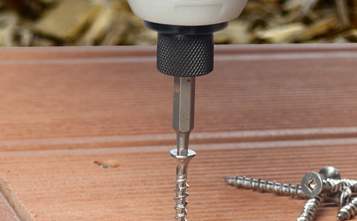According to the characteristics of the work force, the […]
According to the characteristics of the work force, the high-strength bolt connection of the slewing ring should belong to the friction type. The connection of the slewing ring and the upper and lower support bases is generally completed on the ground. When tightening the bolts, the torque method or the angle method can be used to symmetrically and evenly in the circumferential direction many times Tighten to reach the specified pre-tightening force.
The shaft of the high-strength bolt is made of heat-treated No. 45 steel or composite steel, and its performance level is 8.8, 10.9 or higher. Nuts and washers are made of steel with corresponding performance levels. During installation, the bolts are required to be tightened to obtain a large pre-tightening force to compress the contact surface of the component. Friction-type high-strength bolts completely rely on the friction between the contact surfaces to transmit shear force, and slip occurs as the limit state of the load-bearing capacity. Pressure-bearing high-strength bolts regard connection failure as the limit state of bearing capacity, and the occurrence of slippage is the limit state of normal operation. The applied pre-tightening force is generally 0.7 times the product of the net cross-sectional area of the bolt material and the yield limit. The maximum working tensile force selected should be less than the pre-tightening force, so that there is still residual pre-tightening force between the contact surfaces of the components to ensure normal operation reliability.
If the nut is fully tightened, the nut advances h in the direction of the bolt axis, which will inevitably cause the bolt to be pre-tightened and the plate under pressure. Assuming that the bolt is cut along the plate, P represents the pre-tightening force and T represents the plate The squeezing force of P=T is obtained from the equilibrium condition, that is, the pre-tightening force is equal to the squeezing force. At this time, the extension of the bolt rod is Δl1, and the extrusion deformation of the plate is, if E1 and A1 represent the elasticity of the bolt rod Modulus and cross-sectional area, E2 and A2 represent the elastic modulus and cross-sectional area of the plate, according to Hooke's law, because P=T.
When the external force N acts, because the force is not directly applied to the bolt, but to the connected plate, the connected parts tend to separate, the compression deformation is reduced, and the compression force between the plates is reduced, so that The squeezing force is reduced from reduced to, at this time, the equilibrium condition is increased to the original compression deformation between the plates completely disappeared, the squeezing force between the plates also disappears, and the pre-tightening force balanced with it also disappears. But it does not mean that the bolt does not bear the tensile force. On the contrary, when the compression deformation between the plates disappears completely, the bolt is elongated accordingly, so that the force of the bolt elongation is increased. At this time, the force balance condition is determined.

https://www.drywallscrew.net/product/self-tapping-screw/
It can be seen from the above that the tension bolt connection must be pre-tightened, and the connected parts are squeezed. When the external force is received, the squeezing force between the connecting parts decreases as the external force increases, and the pre-tightening force also decreases. When the external force is increased so that the pre-tightening force is reduced to zero when the two connecting pieces are just separated, the tensile force of the bolt will be greater than the pre-tightening force applied during the original static connection.